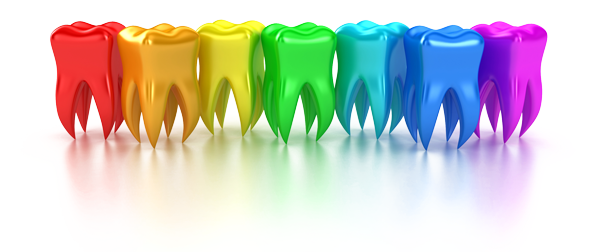
Our Services
Preventive
Regular cleanings help keep gums healthy and teeth cavity-free. A dental cleaning includes removal of tartar and plaque and having the polished to remove stains and further buildups of plaque that are not removed when regular tooth brushing is performed.
Fluoride is a natural substance that helps strengthen teeth and prevent decay.. Fluoride treatments are administered at the office. It is applied to the teeth in a varnish form. Unlike traditional flouride treatments, using a varnish allows patients to eat and drink right away following treatment.
During a regular check-up, oral hygiene instructions are given to both patient and parent to reduce the risk of plaque and tartar build-up, as well as cavities. Instructions include, but are not limited to proper brushing techniques, flossing, and using mouth rinses.
Sealants protect your child’s teeth from decay. Sealants are placed on the biting surfaces of premolars and molars to seal the grooves and pits of the teeth. The teeth are prepped for the sealant application and the sealant is painted directly on the chewing surface of the teeth and then hardens. Sealants are applied in one visit.
Diagnostic
An oral evaluation is recommended every six (6) months to prevent cavities and other dental problems. During an oral evaluation a thorough examination is done to check the hard and soft tissues of the mouth.
Dental X-rays are a valuable diagnostic tool used to identify decay, extra teeth, bone defects, tumors, cysts and check the progress of previous procedures. Latest technology now allow for digital X-rays, which reduce radiation exposure more than 50 percent, and produce instant, high-quality images that can be viewed immediately by the dentist and the patient.
Restorative
Tooth-colored fillings are the most lifelike material used to fill cavities. Composite fillings can be done in one visit. Once the decay is removed from the tooth, it is filled with this composite material and left to harden immediately afterwards.
Root canals involve treating decay within the inside of the tooth. If the inside of the tooth, known as the dental pulp, is damaged it will gradually decay if left within the tooth. The process involves removing the pulp, cleaning out the root canals, and packing the canals with material that will help restore the tooth until it is time for it to exfoliate (or fall out on its own naturally).
Crowns are used to restore damaged or decayed teeth in children. Crowns completely cover the remaining tooth structure after it has been treated. They can be made of many different materials, including stainless steel, composite materials, polycarbonate, resin, porcelain, and zirconia. We offer several different options, allowing us to choose what is best for each child and each tooth.
A dental extraction is the removal of extremely decayed or broken teeth. To perform an extraction, the area is anesthetized to minimize discomfort and the tooth is then rocked back and forth until it is removed from its socket.
Interceptive Orthodontics
A habit appliance is useful to help stop a thumb or finger habit and/or to help re-train an improper tongue position or swallowing pattern. It is necessary to place an appliance to minimize the harm and distortion the habits or tongue posture can have on teeth. Most habit appliances are banded for adhesion to the back molars and are not removable.
Space maintainers are used to keep teeth from drifting into an empty tooth space due to early loss of primary (baby) teeth. Baby teeth act as a guide for the eruption of the permanent teeth. A space maintainer is made of stainless steel and/or plastic. It can be removable or fixed to the teeth.
Many sports require the use of mouth guards to protect children’s teeth while they are playing. Using impressions of your child’s mouth, we will create a unique mouth guard for your child to use during activities. Our custom made mouth guards provide superior protection and the most comfortable fit for your child’s mouth.
Aesthetic
Cosmetic bonding is the process of filling or restoring teeth with a tooth-colored material in order to maintain its natural appearance. In order to bond a tooth, tooth colored material is added to the tooth to build it up.
Whitening, also known as bleaching, is the procedure used to brighten teeth. Our office provides both professional strength whitening strips and At-Home whitening kits. Our at-home whitening kits require an impression of the teeth to be taken to make a customized mouth guard to hold the whitening gel, containing carbide peroxide, against the teeth. Once the mouth guard is made, it is worn for a period of time, as instructed by our office. The amount of time may vary from a couple hours a day, or all night, for up to four weeks or longer, if desired.
Sedation Dentistry
Nitrous oxide, sometimes referred to as “laughing gas,” is an effective and safe sedation agent that is inhaled through a mask that fits over your child’s nose to help them relax. Mixed with oxygen, Nitrous oxide allows the patient to breathe normally through their nose and within minutes they should start to feel the effects. They may feel light-headed or a tingling in their arms and legs. Some patients comment that their legs and arms feel heavy. Ultimately, they should feel comfortable and calm. The effects of nitrous oxide wear of quickly after the small mask is removed. Talk to the doctor about whether nitrous oxide would be a good option for your child.
Local anesthesia is the elimination of sensation/feeling, especially pain, in one part of the mouth by the topical application or injection of a local anesthetic drug.
Conscious oral sedation is an alternative minimal sedation that allows you to remain awake but relaxed. For people who have a fear of dental procedures, conscious sedation may take away some of the anxiety. The doctor will combine the use of oral sedation along with a local anesthetic so you have little to no discomfort.